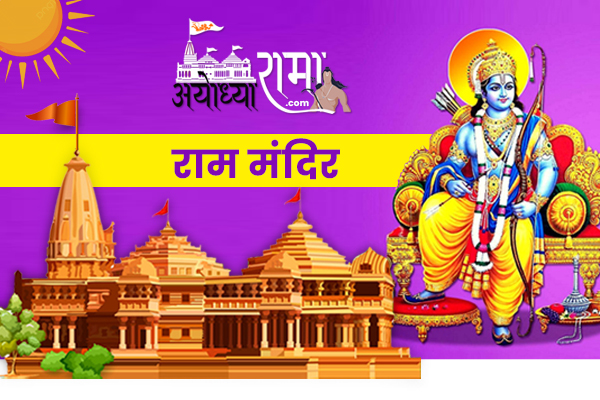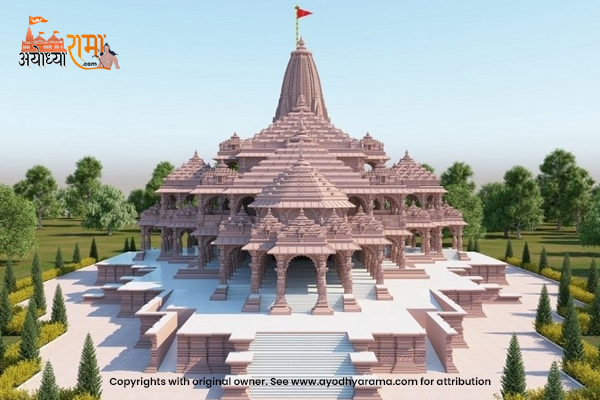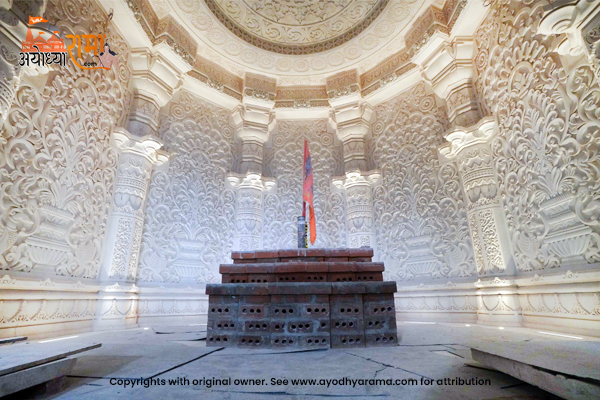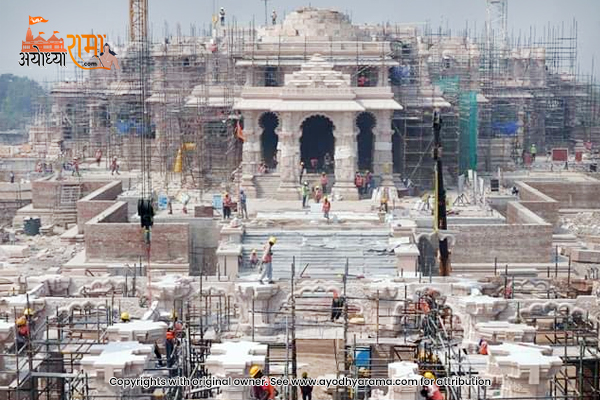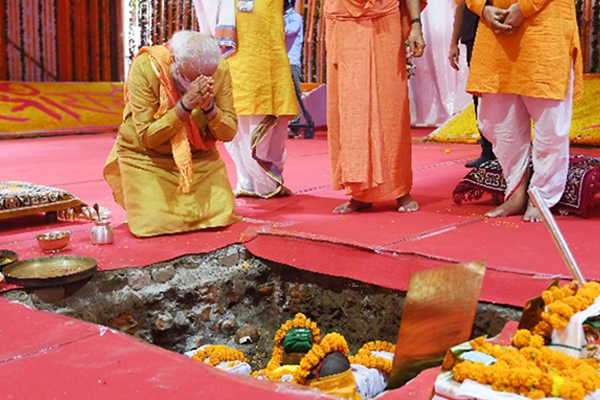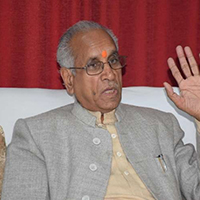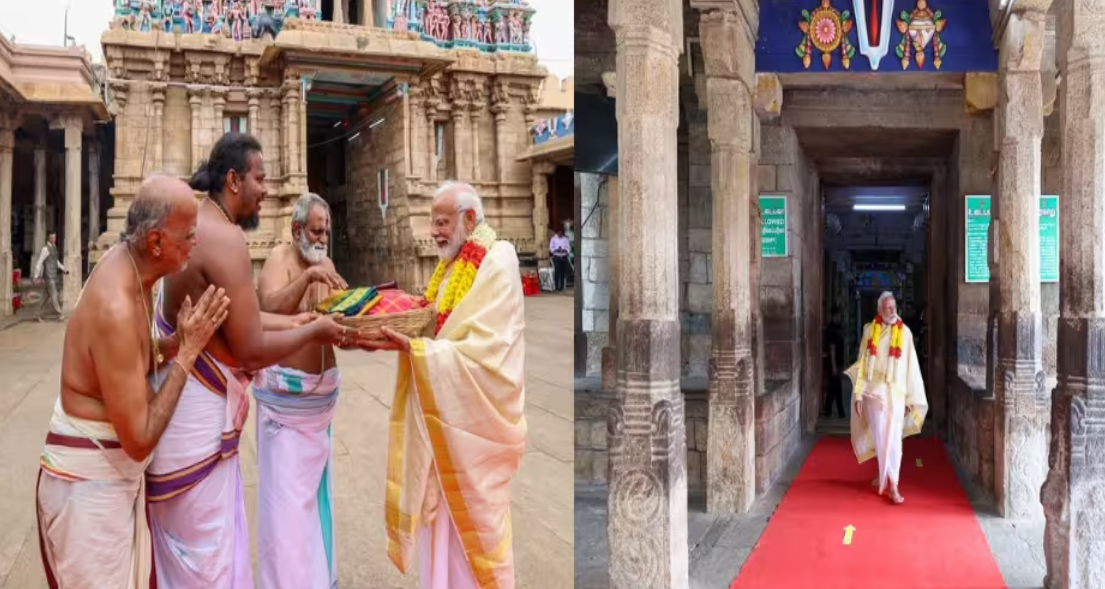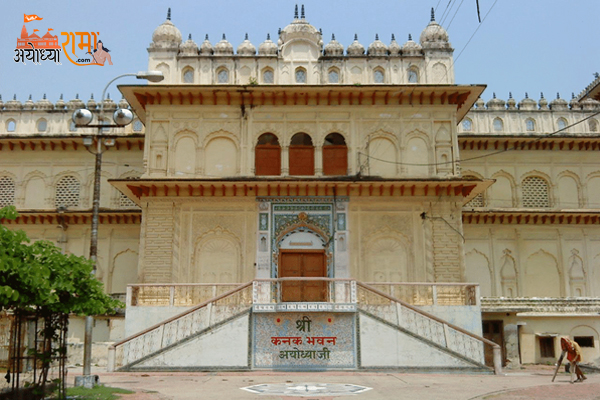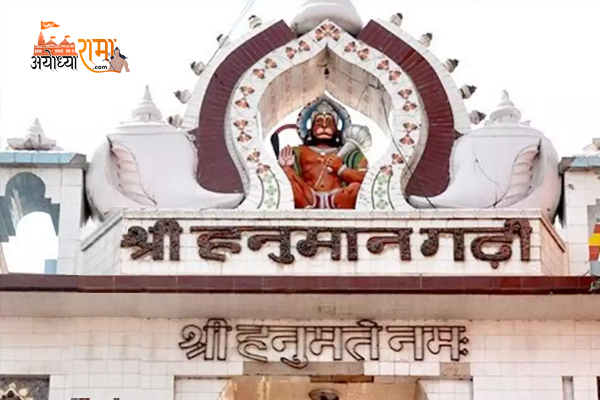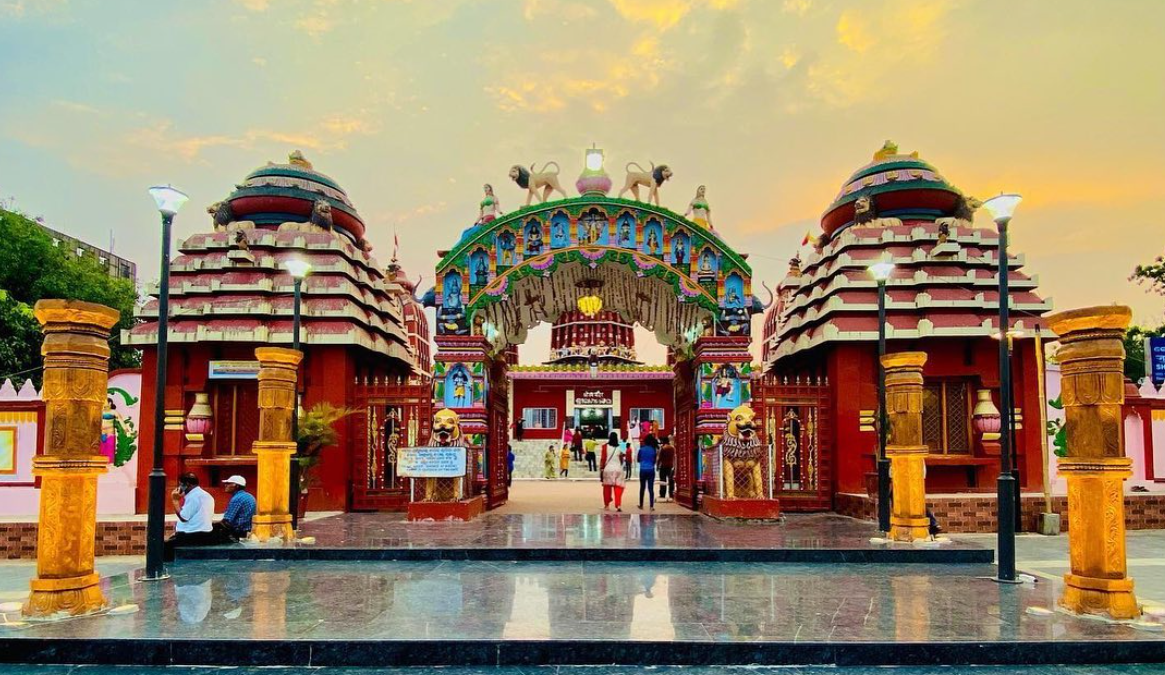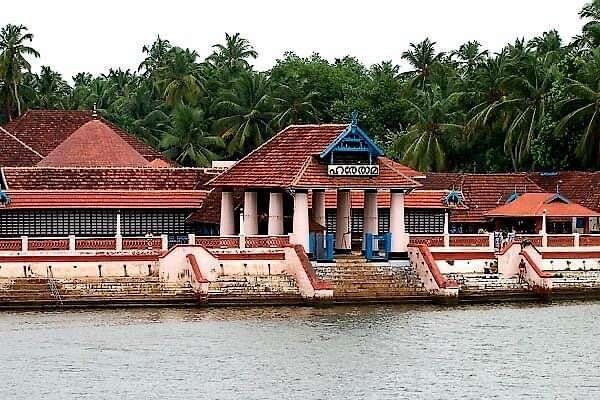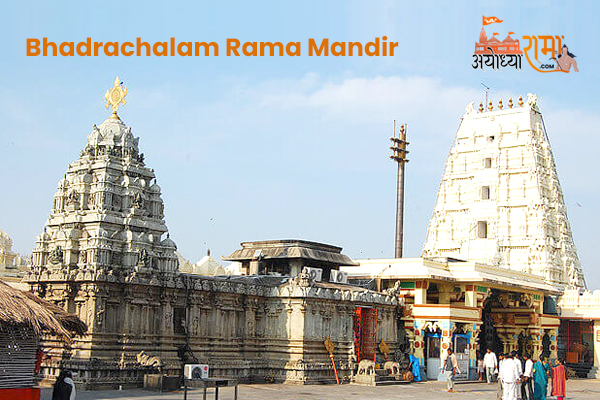Ayodhya Rama Mandir Overview
The Ayodhya Rama Mandir is located at the Rama Janmabhoomi in Ayodhya, Uttar Pradesh, India. The birth of Rama in Ayodhya is detailed in the Baal Kanda of Valmiki Ramayana (verses 2,5,7, 8,9,10 and 11).
The Ayodhya Rama Mandir is not just a temple, but a symbol of faith, unity, and cultural heritage. The temple is a testament to the enduring legacy of Prabhu Shri Rama.
The grand temple is built in the Nagara style of temple architecture, characterized by its towering spires or shikharas using pink sandstone and is spread across an area of 2.77 acres. The temple is 161 feet high and has three floors. The first floor is dedicated to Prabhu Shri Ram, while the second floor is dedicated to Lord Hanuman, and the third floor is a museum showcasing the history and culture of Ayodhya.
| Key Details of the Construction of Ayodhya Rama Mandir | |
| Area | Total: 2.7 acres Built Up Area: 57,400 square feet |
| Temple Dimensions |
Length: 380 feet (east-west) Width: 250 feet Height: 161 feet |
| Floors | Number of floors: 3 Height of each floor: 20 feet First Floor: Dedicated to Prabhu Shri Rama (Ram Lalla) Second Floor: Dedicated to Hanuman & Ram Durbar Third Floor: Ayodhya culture & history museum |
| Number of Columns |
Total: 366 columns
First Floor: 160 |
| Pavilions & Gates |
Number of Pavilions: 5 Number of Gates: 12 |
| Building Material |
Pink Colour Sandstone from Bansi Paharpur, Bharatpur District, Rajasthan.
Also, Mirzapur stone, granite and Makrana Marble for flooring & cladding |
| Lifespan of Temple |
1000 years, No use of Iron in foundation |
* Details from the website of Shri Ram Janmabhoomi Teerth Kshetra Trust (SRJBTKshetra)
Puja Timings
| Shringar Aarti | 6:30AM |
| Bhog Aarti | 12:00PM |
| Sandhya Aarti | 7:30PM |
Note: Advance Booking is needed for Aarti
Ram Lalla Idol
It is 51 inches tall from foot to forehead. The entire statue is over eight feet tall and three-and-half feet wide including the ‘Prabhavali’. It is the statue of Lord Ram as a five-year-old child, holding a bow and arrow.
The idol of Prabhu Shri Rama in the Ayodhya Ram Mandir has been sculpted by Arun Yogiraj Shilpi of Mysuru. Arun Yogiraj Shilpi works out from his ancestral house at the Brahmarshi Kashyapa Shilpa Kala Kendra, near Gun House, Chamaraja Double Road, Mysuru. Arun was one among the three sculptors from the country, including G L Bhat from Bengaluru and Sathyanarayan Pandey from Rajasthan, who were given the work to sculpt the statues of Ram Lalla.
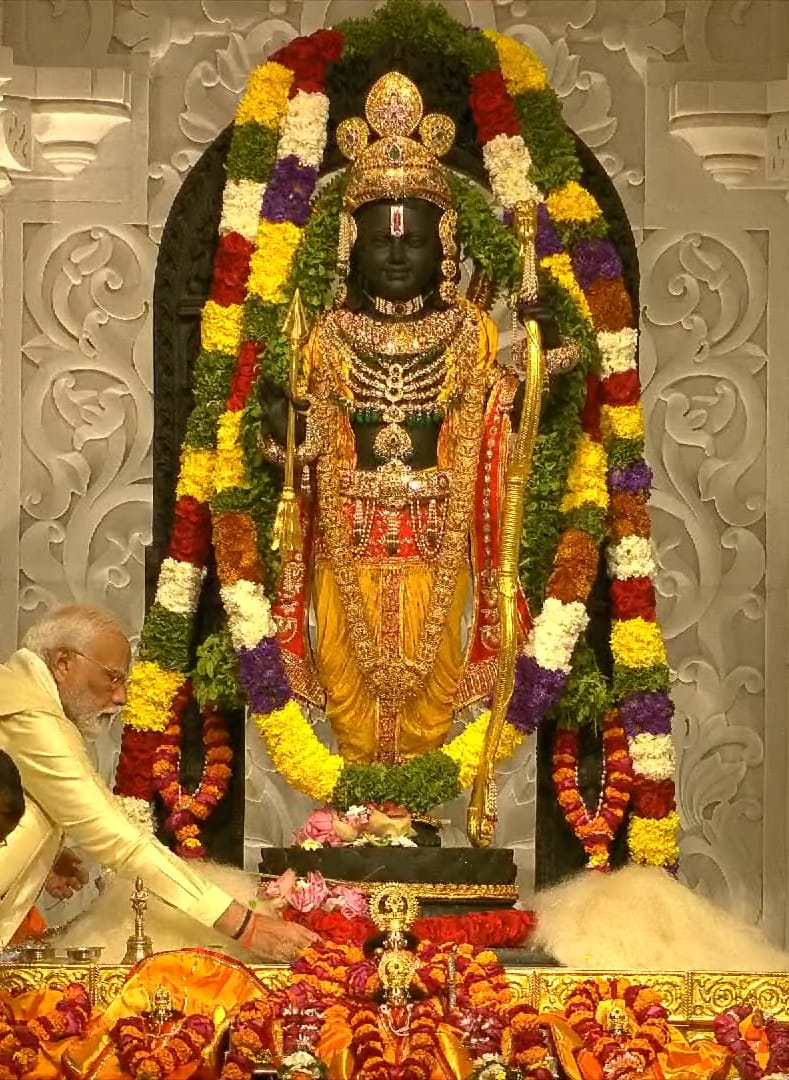
Garbha Griha
The Garbha Griha is the ‘Sanctum Santorum’ of the temple. At the Rama Mandir in Ayodhya, this is being constructed magnificently. Some pictures of the Garbha Griha during construction.
Rama Mandir Construction
Architecture Style
The Ayodhya Rama Mandir is designed in Nagar style of architecture, popular in North India. It will have the super fine inter-connected five architectural sections such as
- Garbh Gruha,
- Antral,
- Mahamandap or Gudhmandap,
- Rangmandap &
- Praveshmandap.
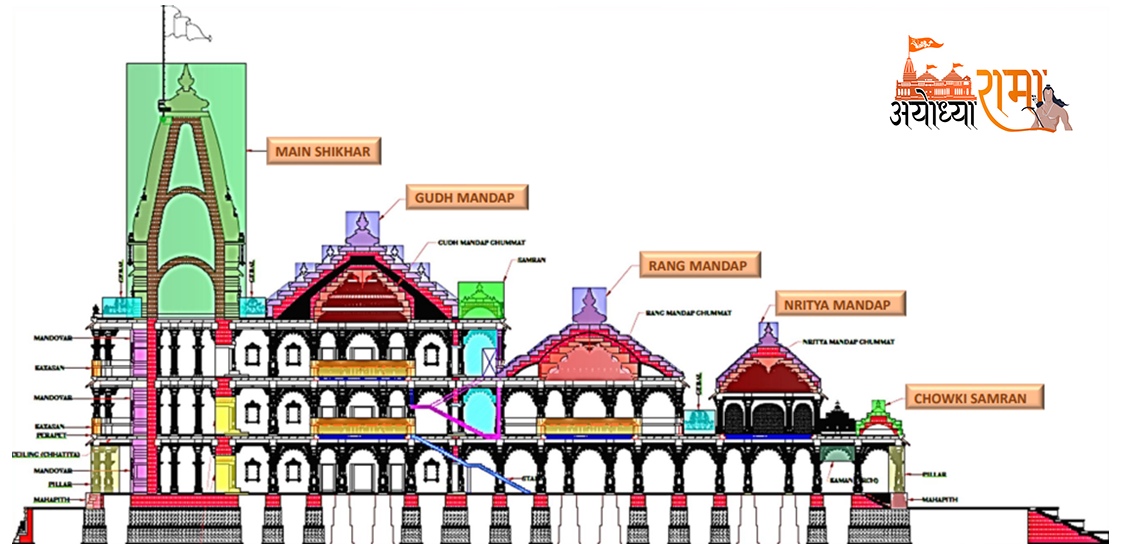
Architects and Builders
The senior trustees had signed an agreement with C.B. Sompura in 1992 for architecture design services was revalidated with additional provisions. The temple is designed by Shri Sompura, constructed by Larsen & Toubro with project management by Tata Consulting Engineers with Master Planning by Design Associates.
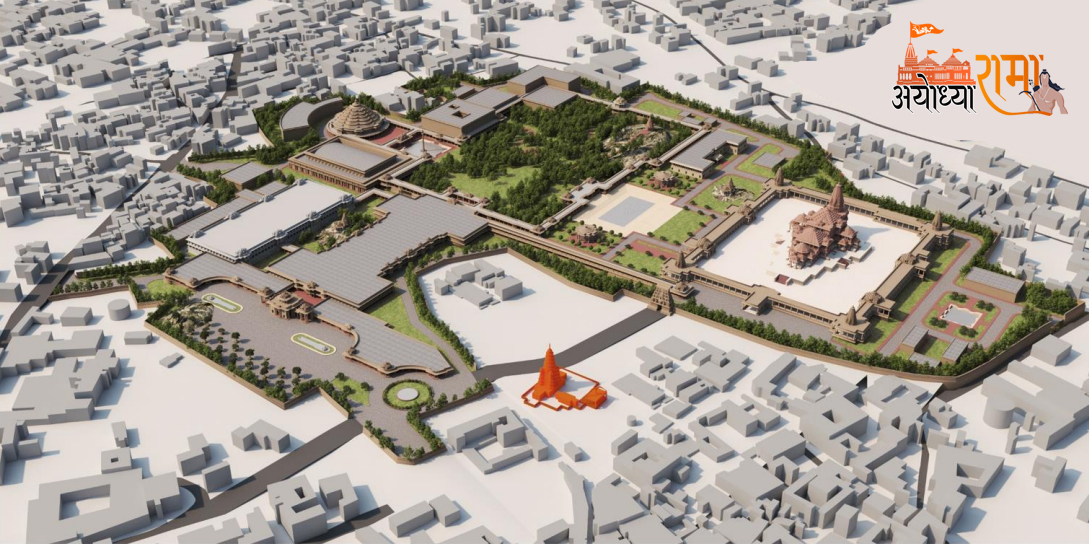
Pictures of Temple Construction
The construction of the Ram Janmabhoomi temple in Ayodhya is one of the most gigantic efforts in temple construction since many years. The scale of work and the attention to detail is fascinating to observe. A collection of some pictures taken from the Twitter handles of the trust & trustees as well as collected from the public domain are shown here. All copyrights are with the owners.
Sinh Dwar
The Magnificent Sinh Dwar of Shri Ram Janmbhoomi Mandir.
Murtis of elephant, lion, Hanuman Ji & Garuda have been installed at the entrance gate of Shri Ram Janmbhoomi Mandir. These Murtis, have been sculpted from pink sandstone sourced from Rajasthan’s Bansi Paharpur village.
Bhumi Poojan (Foundation Stone Laying Ceremony)
On 5th August 2020, Prime Minister Narendra Modi attended the Bhoomi Pujan for the beginning of the construction the Rama Mandir. On arriving in Ayodhya, the prime minister first offered prayers at the Hanuman Garhi temple and then planted a parijat sapling at the temple site.
Shree Ram Janmabhoomi Teerth Kshetra
Shri Ram Janmabhoomi Teerth Kshetra is a trust set up for the construction and management of Ram Mandir in Ayodhya by the government of India. The trust is composed of 15 trustees.
The trust was created as per the verdict of the Supreme Court and was announced by Prime Minister Narendra Modi in the Lok Sabha on 5 February 2020. It has 15 members.
Praana Pratishtha
(there are different spellings depending on the regions of India – Pran, Prana, Praan, Praana etc. They all meaning the same.)
What is Prana Pratishtha ?
Prana Pratishtha is the act infusing life-force into the murti (idol). The murti will be invited into the Garbagriha of the temple, bathed and dressed after seating in a place of comfort with the face oriented towards the east. The priests will conduct a Puja with special mantras (hymns) to infuse life into the murti.
Date and Program of Praan Pratishtha
The Praan Pratishtha of Ram Lalla at Ayodhya’s Ram Mandir is scheduled for January 22, 2024, at 12:20 pm
| Date of Praan Pratistha | 22nd January 2024 |
| Muhurat (Time) | 12.20 PM |
| Nakshatra | Mrigashira |
The Praan Pratishtha ceremony will be the conclusion of a 7-day long rituals beginning on January 16th.
6500 guests have been invited to the ceremony.
How to Reach
Maharishi Valmiki International Airport Ayodhya Dham is the new airport in Ayodhya. This was inaugurated by Prime Minister Narendra Modi on 30th December 2023.
Apart from the above, Lucknow International Airport is the nearest Airport from Ayodhya. People can also reach from Gorakhpur, Prayagraj and Varanasi Airports.
Faizabad and Ayodhya are major railway stations of the district and are well connected to almost all major cities and towns.
By Rail route Ayodhya is 128 kms. from Lucknow, 171 kms.
from Gorakhpur, 157 kms. from Allahabad and 196 kms from Varanasi.
By Rail route Ayodhya is 135 kms. from Lucknow, 164 kms. from Gorakhpur, 164 kms. from Prayagraj and 189 kms from Varanasi.
Services of Uttar Pradesh Transport Corporation buses are available 24 hours a day, and it is very easy to reach here from all places. The city is about 130 k.m. from Lucknow, 200 k.m. from Varanasi, 160 k.m. from Prayagraj , 140 k.m. from Gorakhpur and about 636 k.m. from Delhi. Buses are frequently available from Lucknow,Delhi and Gorakhpur. Buses are also available from Varanasi, Prayagraj and other places as per their schedule.
Rama Janmabhoomi Andolan Timeline
The site at which the Ayodhya Rama Mandir is being built has been disputed for many centuries. The Hindus have been fighting for possession of the site and the allowing of prayers from British colonial times. A brief timeline of the events in the past 300 years is given below.
1856-57
1877
1885
1934
1949
1950
1950
1950
1959
1961
1964
1986
1989
1989
1991
1992
1993
1994
2010
2019
2019


